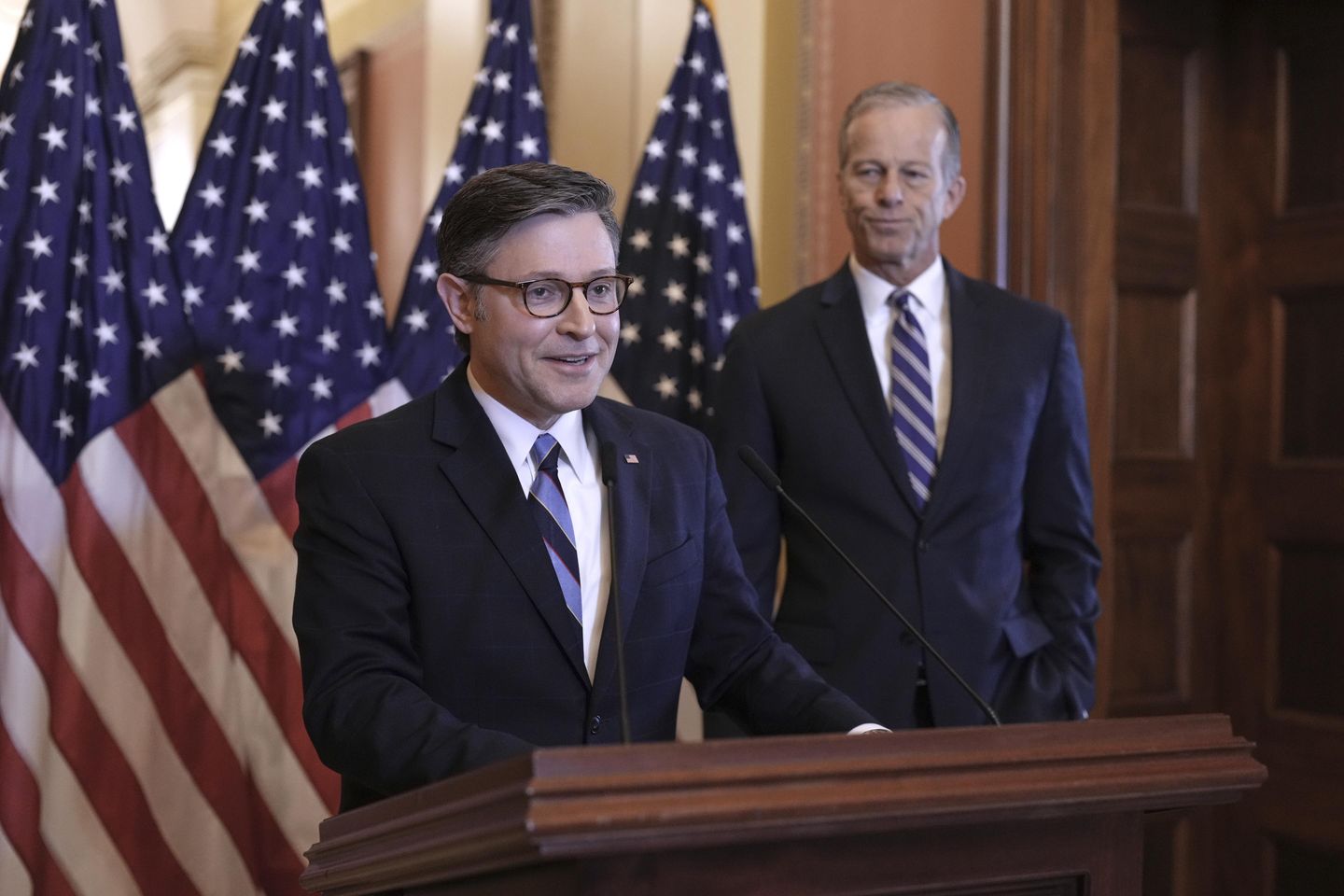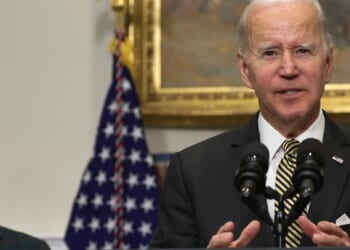
House Republicans narrowly passed a budget resolution on Thursday with a 216-214 vote, overcoming initial resistance from fiscal hawks who were skeptical of the Senate’s approach to spending cuts. This crucial vote enables Republicans to use the filibuster-proof reconciliation process to advance President Trump’s agenda, including tax cuts, spending reductions, and policy changes in border security, defense, and energy.
The breakthrough came after House Speaker Mike Johnson and Senate Majority Leader John Thune held a joint press conference pledging a minimum of $1.5 trillion in spending cuts in the final reconciliation bill. This commitment matched the House’s original budget instructions while addressing concerns about the Senate’s much lower $4 billion floor for cuts.
Key holdouts were persuaded by written and verbal assurances from Republican leadership that the reconciliation bill would include substantial cuts and wouldn’t increase the deficit when accounting for projected economic growth. Rep. Tim Burchett warned there would be “a mutiny” if these commitments weren’t honored.
Many House fiscal conservatives initially distrusted the Senate, with Rep. Eric Burlison comparing the situation to “Lucy with the football,” referencing past disappointments. However, personal assurances and documented agreements ultimately secured their support. Rep. Chip Roy emphasized that the commitment to not increase the deficit would incentivize Senate Republicans to adopt more cuts if they wanted to make Trump’s first-term tax cuts permanent.
Only two Republicans — Reps. Thomas Massie and Victoria Spartz — voted against the resolution. Mr. Massie remained skeptical that the chambers would agree on meaningful cuts, arguing that “there is no real commitment” without binding budget instructions.
The resolution gives House and Senate committees until May 9 to report their portions of the reconciliation bill. Speaker Johnson had previously aimed to have the package on President Trump’s desk by Memorial Day, though he didn’t restate this timeline after the delayed vote. House Majority Leader Steve Scalise indicated they hoped to complete the process “by the end of May,” noting that Mr. Trump “is not somebody that wants to wait around for months.”
Senate Budget Committee Chairman Lindsey Graham stressed the urgency of moving quickly to address funding for defense, border security, and raising the debt limit before summer.
Read more: House approves budget plan, opens door to Trump agenda
This article is written with the assistance of generative artificial intelligence based solely on Washington Times original reporting and wire services. For more information, please read our AI policy or contact Ann Wog, Managing Editor for Digital, at awog@washingtontimes.com
The Washington Times AI Ethics Newsroom Committee can be reached at aispotlight@washingtontimes.com.





![Jasmine Crockett Justifies Mass Illegal Immigration With Bizarre Argument [WATCH]](https://www.right2024.com/wp-content/uploads/2025/03/1742007023_Jasmine-Crockett-Justifies-Mass-Illegal-Immigration-With-Bizarre-Argument-WATCH-350x250.jpg)

![NYC Tourist Helicopter Falls into Hudson River, Siemens Executive and Family Among Those Killed [WATCH]](https://www.right2024.com/wp-content/uploads/2025/04/NYC-Tourist-Helicopter-Falls-into-Hudson-River-Siemens-Executive-and-350x250.jpg)








